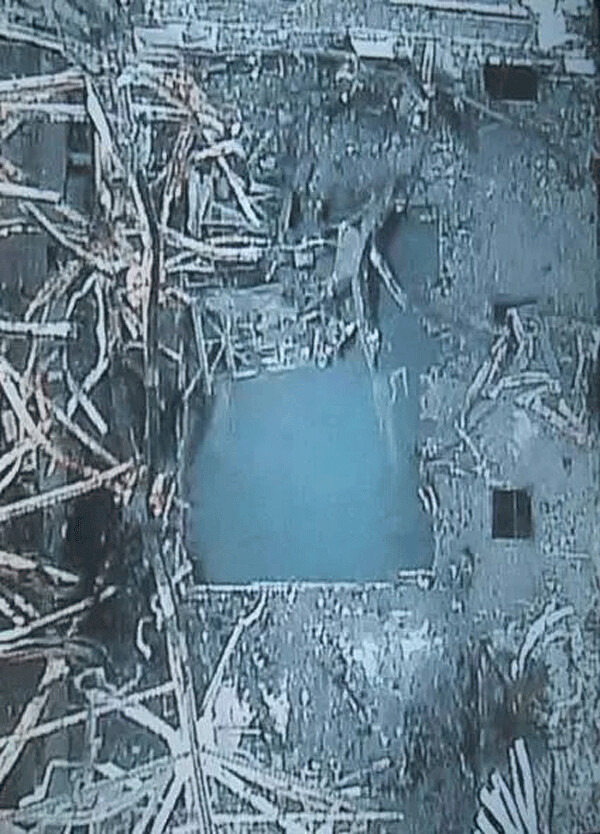News & Articles
Browse all content by date.

A radiation disaster, worse than the 2011 Fukushima-Daiichi catastrophe in Japan, could hit the United States because of ignored risks, according to a startling new study from Princeton University. The US Nuclear Regulatory Agency (NRC) has greatly underestimated the risk of major radiation releases from a reactor waste fuel fire. Such reactor fuel fire could erupt in the event of a “station blackout”—the loss of off-site and emergency electric power—and the consequent boiling off of cooling water in waste fuel pools.
Frank von Hipple, a nuclear security expert at Princeton, and the historian Michael Schoeppner, are the study’s coauthors. The dispersed radioactive contamination from such a fire “would be an unprecedented peacetime catastrophe,” the authors conclude in their paper.
Von Hipple and Schoeppner argue that the NRC’s gross minimization of risk is the result of corporate and political interference. “The NRC has been pressured by the nuclear industry, directly, and through Congress, to low-ball the potential consequences of a fire because of concerns that increased costs could result in shutting down more nuclear power plants,” von Hipple told Science Daily. “We’re talking about trillion-dollar consequences,” he said.
Waste uranium fuel rods, often called “spent fuel,” are kept in cooling pools near reactors for several years. Although still very hot, they can then be moved into so-called “dry cask” storage. While nuclear reactors themselves have emergency, back-up generators to circulate cooling water inside the “reactor core” (these generators were wrecked at Fukushima), US waste fuel pools do not have back-up, emergency power. The pools are especially vulnerable to station blackouts.
Cooling pool water is normally pumped from a nearby lake, river or sea, and must constantly circulate and cover the waste fuel, which is the hottest and most radioactive material in the commercial nuclear industry. (Waste fuel from Navy propulsion reactors is reportedly more deadly.) Any loss of on-site electric power—like happened at Fukushima—can stop cooling water circulation, causing the water to boil away, and expose the fuel rods. Such loss of coolant can ignite a fuel fire and cause catastrophic amounts of radiation to be released.
The world watched dreadfully in March 2011 as the station blackout at Fukushima-Daiichi threatened to cause this sort of fuel fire. The earthquake and tsunami cut off all cooling water-pumping and circulation. At a congressional hearing March 16, 2011, six days into the triple meltdowns, the head of the NRC, Gregory Jaczko, said in a Congressional hearing in Washington that all the water was gone from one of Fukushima’s waste fuel pools. Although Jaczko was mistaken, the nightmare was possible, likely even, and observers counted the hours until cooling water boiled off and a fuel fire would ignite.
The NRC has estimated for, example, that a major waste fuel pool fire at the Peach Bottom station in Pennsylvania would force the evacuation of 3.46 million people from 12,000 square miles, reports Richard Stone writing in Science magazine May 24. But the Princeton researchers, who say they used a better computer modeling system, estimate that such a disaster would force 18 million people to evacuate from the surrounding 39,000 square miles.
Von Hipple’s and Schoeppner’s report followed, by only one week, a study from the US National Academies of Sciences that urges the United States to make improvements at its waste fuel pools. The NAS’ study recommends that the NRC and reactor operators upgrade monitoring of the waste pools—most do not even have a waste pool water-level monitor in the operator control rooms!—and improve the means of topping up water levels during an accident.
Another way to reduce the risk of waste fuel fires is to hurry the transfer of fuel from the cooling pools to dry casks. “As recently as 2013, the NRC concluded that the projected benefits do not justify the roughly $4 billion cost of a wholesale transfer. But the national academies’ study concludes that the benefits of expedited transfer to dry casks are fivefold greater than NRC has calculated,” Stone reported in Science.
The paper, “Nuclear safety regulation in the post-Fukushima era,” was published May 26 in Science.
—Beyond Nuclear, May 26, Physics.org, May 25, and Science, May, 24, 2017 Jaczko said at a congressional hearing in Washington Wed., March 16, 2011, that all the water was gone from that reactor #4’s waste fuel pool and that anyone close to the plant could face lethal doses of radiation. (CBS News, 3/17/11; http://www.cbsnews.com/news/desperate-attempts-to-cool-fukushima-reactors/)
CBS News March 17, 2017 http://www.cbsnews.com/news/desperate-attempts-to-cool-fukushima-reactors/).
| Tweet |

